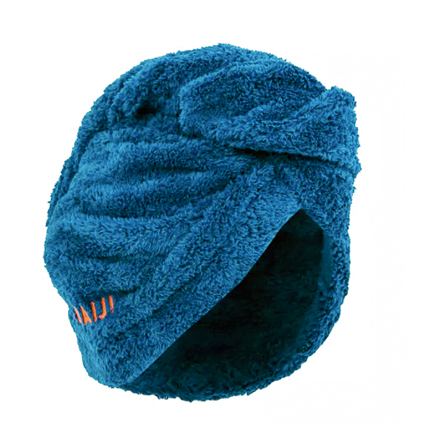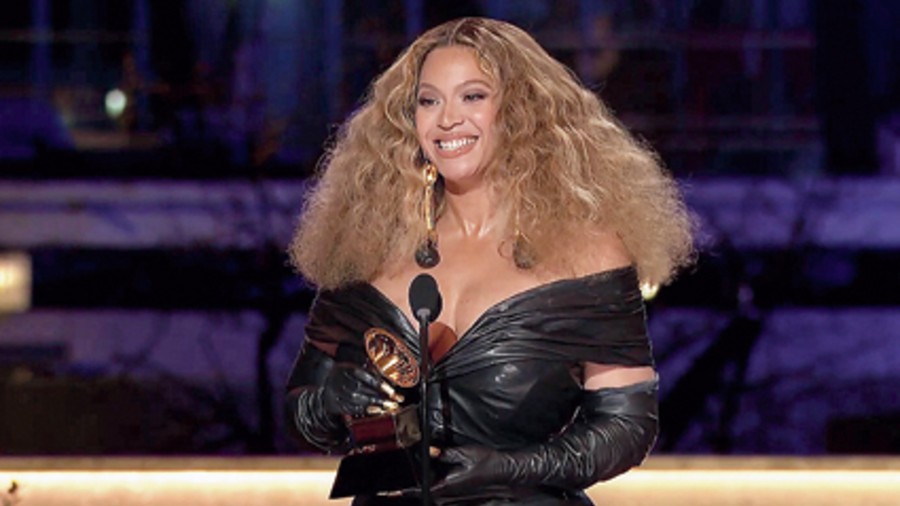“It takes longer to write about the curly girl method than it takes to follow it” — Random, wise stranger on the Internet.
The effort required to explain the curly girl method (CGM) to a newbie is an exhausting process but the efficiency and results of the said method often act as a compelling agent that forces one to share the joy. It all began with Lorraine Massey, a young hairstylist in the UK who watched with disdain as she straightened the locks of her clients to fit their hair into styles promoted by the “straight blonde hair white girl” image. In films, a curly-haired woman almost always eventually became lunatic in the common narrative. Massey decided to put all her knowledge into a book, Curly Girl: The Handbook, that is now considered the holy grail of haircare for women of colour (WoC). Here is a method that advocates the complete abandonment of sulphates and silicones (found aplenty in our regular shampoos and conditioners) and providing the right amount of moisture to your dry curls and waves, allowing them to take its own shape.
We have all been told by parlour aunties and hairstylist uncles during unfortunate haircut sessions that the frizzy state of our hair is probably because we lived with the curse of Satan for having stolen a toffee in second grade. Or so the capitalist market selling smooth, black, shiny hair in ads would like to tell us. However, ‘frizz’ is only normal for WoCs and it is probably because our hair is curly. There has been an easy demarcation of hair types by Andre Walker of Oprah Winfrey’s hairstyling fame that designates a specific code to your natural hair type. While 1A-C goes from smooth straight hair to straight, coarse hair, 2A to 4C ranges from naturally wavy to kinky curly, coarse hair.

(L-R) Before and after CGM Sourced by the correspondent
Let us take you through a step-by-step guide on the basics of CGM and how you can embark on it without feeling like you are ready to go to war.
STEP 1: Reset Wash
This step involves the use of a sulphate-only shampoo to clean out the years of abuse that we have made our hair go through. This reset wash or clarifying wash loosens out the buildup of products and silicones from over the years and prepares your hair and scalp to begin anew on a journey that has no harsh chemicals.
STEP 2: Deep Condition
Once a week, one should take a protein-balanced deep-conditioner and allow it to sit on your hair for 10-15 minutes.
STEP 3: Low Poo
Low poo refers to shampooing your hair with a mild, sulphate-free shampoo to clean out any residual deep conditioner from your scalp.
STEP 4: Condition
Take copious amounts of conditioner and slowly using your fingers, section your hair and apply the conditioner thoroughly from your tips to the roots. This method is called ‘raking’.
STEP 5: Detangle
Use your fingers or a wide-toothed comb to detangle your hair with the conditioner in it and evenly coat the hair with the product.
STEP 6: Squish to Condish!
Wet your hair slightly and cupping your hair in your palms, bring it to your scalp and squeeze out the excess water. Repeat the process multiple times. This allows your hair to absorb all the moisture needed from the conditioner into your hair and washes out the rest. Wash out the conditioner.
STEP 7: Style It
Styling involves multiple products based on your hair porosity and texture. Leave-in creams, custards, gels, mousses, applied using the ‘praying hands method’ to tame the frizz, should be the key to styling your damp or soaking wet hair.
STEP 8: ‘Plop’ Your Hair
Using a microfibre towel or a T-shirt, slowly crunch your hair in the same movement to squeeze out excess water. Then ‘plop’ your head upside down in the towel and wrap it around your head for 20 minutes.
STEP 9: Diffuse or Air Dry
Perhaps the most difficult part of this process, air drying is when one leaves their hair without touching it till it completely dries. For thicker hair, this could take up to six-seven hours!
Voila! Your hair is at its healthiest and most natural best!
There are nine things a curly girl must keep in mind
• Complete ‘no’ to sulphates (a lathering agent that strips your hair of natural oils), silicones (water-insoluble agents that add sheen and shine to your hair) and alcohols

• No heat styling and only allowing for a diffuser or air-drying method to dry your hair
• Not using shampoo or using a ‘low-poo’ (sulphates-free shampoo)
• No dry brushing of hair
• Use only microfibre towels or cotton T-shirts to dry your wet hair
• Protecting your hair while you sleep with a satin bonnet and satin pillow covers works wonders to preserve your curls or waves without causing frizz
• Oiling your hair or ‘pre-poo’-ing is an extremely important step in your haircare process, something we have heard our mothers say a thousand times since childhood

• Transitioning requires patience and years of dedication. The idea is to let your hair grow and breathe and be its healthiest and not expect ringlet curls to appear in your hair overnight
• A little frizz is good and natural and one should embrace it
• Before buying expensive products, it is important to master the techniques of application
Home-grown brands with complete CGM-approved products range:

The curls community in India is a burgeoning world with new entrants coming up with authentic, vegan, cruelty-free, chemical-free products that help restore your hair to its natural glory. Some of the brands we absolutely love are Arata, CurlUp and Fix My Curls. We spoke to Anshita Mehrotra, founder of Fix My Curls, whose entire range of products is a great place to start your CG journey.
Tell us about your personal curly girl journey...
My curly girl journey has been long and hard, a constant battle between wanting to embrace myself but never knowing how to. That was until four years back, when I used my first set of curly hair products. Those weren’t CG-friendly because I had no idea of the CG method then, but as I took a deep dive into more brands I found communities of women that used this method and loved their curls. So for me, I went from permanently straightening my curls to chopping all of them off and starting from scratch, all with plenty of trial and error.
What led you to start your own brand?
It felt like an opportunity to find myself, by helping other people find themselves too. Hair was a big part of my self-esteem, and I saw zero representation for curly hair as I grew up. Starting my brand at first was a very personal endeavour, one where I was eager to engage with other curly-haired people, but it turned into something much bigger that I’m really proud of.
What are your thoughts on the CG community?
I believe the curly girl community is a very vital part of helping people embrace themselves. It might seem hair focused but when you’ve hated a part of yourself your whole life, finding a group of people who help you love it is very special. Our community is slowly growing, and I can’t wait to see what we do.
What is missing in India in the CG movement at this moment?
What’s missing is simply basic information. It’s great to create products that are CG friendly, and to see fantastic results, but there are people who have never thought of embracing their curls that need more than just a product, they need guidance too. I know that personally, my own brand strives to teach our customers about their hair, rather than just sell them about a product. We want them to understand themselves better in order to invest in their hair. With stylists, there is a handful in India itself that accept curly hair for what it is. I don’t blame them for not knowing but it does create a huge gap in the curly hair community when hair professionals tell you to straighten instead of embrace. I do think support from digital media in India could also go a long way in helping the CG community thrive and reach new people.
What plans for the future with Fix My Curls?
At Fix My Curls, we plan to create more products that help anyone with curly/wavy hair embrace their natural hair, but more than that we hope to educate and create awareness about hair textures, the origins of curly hair, and the basics of beginning your curly girl journey.
One message for those confused about beginning this journey or are sitting on the fence about it...
Don’t give up! You may not get results using a specific product line, or technique. Trial and error is the best way to move forward. So try new products, mix and match and don’t shy away from asking for help from your community. Keep trying, your hair deserves as many chances as it needs after all those years of neglect.
Thoughts from hair and beauty pro Bridgette Jones:

“People have less time to invest in their hair now and they have been mistreating their hair with straighteners and keratin treatments for the longest time. I am seeing a rush of people who now want to wear the beauty of their natural hair more and more. With a great bunch of products in the market that are completely sulphate and paraben free, it is now easier to get amazing results with your natural curls and waves. One reliable brand that I absolutely swear by is Davines. I love the way (model) Sneha Ghosh (right, below) has let me convince her to keep her curls despite being in the industry she is in, which demands heavy-duty styling products.”
Few go-to tricks from Bridgette
• Only use satin scrunchies and satin/silk pillow covers as they help your hair as well as your skin
• Mix water, conditioner and serum in a spritz bottle and use it on your frizzy hair when you are travelling
• Avoid shampoo as much as possible
• Use a wide-tooth comb to detangle your hair from tips towards the roots, when it is wet










